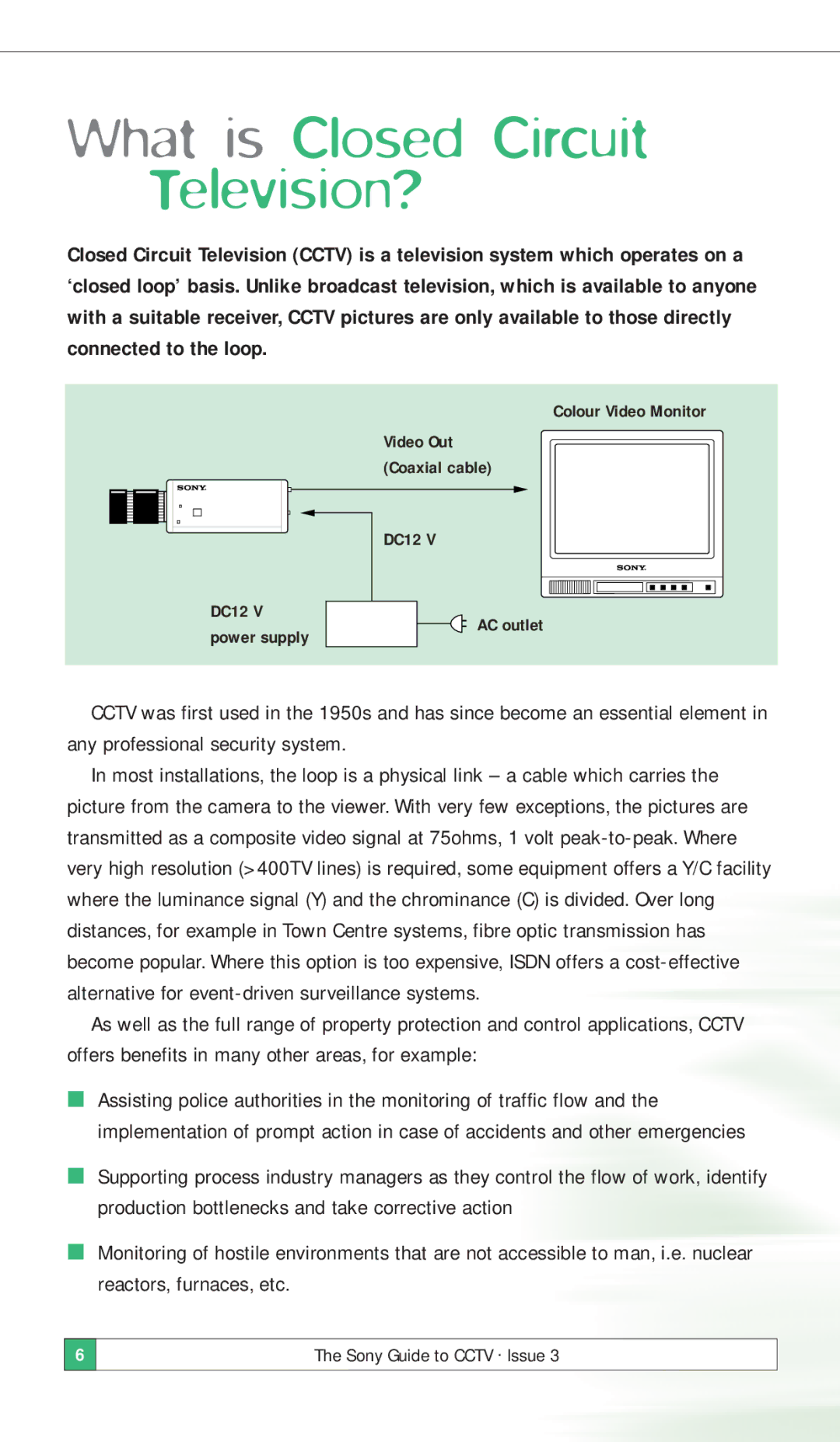
What is Closed Circuit Television?
Closed Circuit Television (CCTV) is a television system which operates on a ‘closed loop’ basis. Unlike broadcast television, which is available to anyone with a suitable receiver, CCTV pictures are only available to those directly connected to the loop.
DC12 V power supply
Colour Video Monitor
Video Out (Coaxial cable)
DC12 V
AC outlet
CCTV was first used in the 1950s and has since become an essential element in any professional security system.
In most installations, the loop is a physical link – a cable which carries the picture from the camera to the viewer. With very few exceptions, the pictures are transmitted as a composite video signal at 75ohms, 1 volt
As well as the full range of property protection and control applications, CCTV offers benefits in many other areas, for example:
■Assisting police authorities in the monitoring of traffic flow and the implementation of prompt action in case of accidents and other emergencies
■Supporting process industry managers as they control the flow of work, identify production bottlenecks and take corrective action
■Monitoring of hostile environments that are not accessible to man, i.e. nuclear reactors, furnaces, etc.
6
The Sony Guide to CCTV . Issue 3
